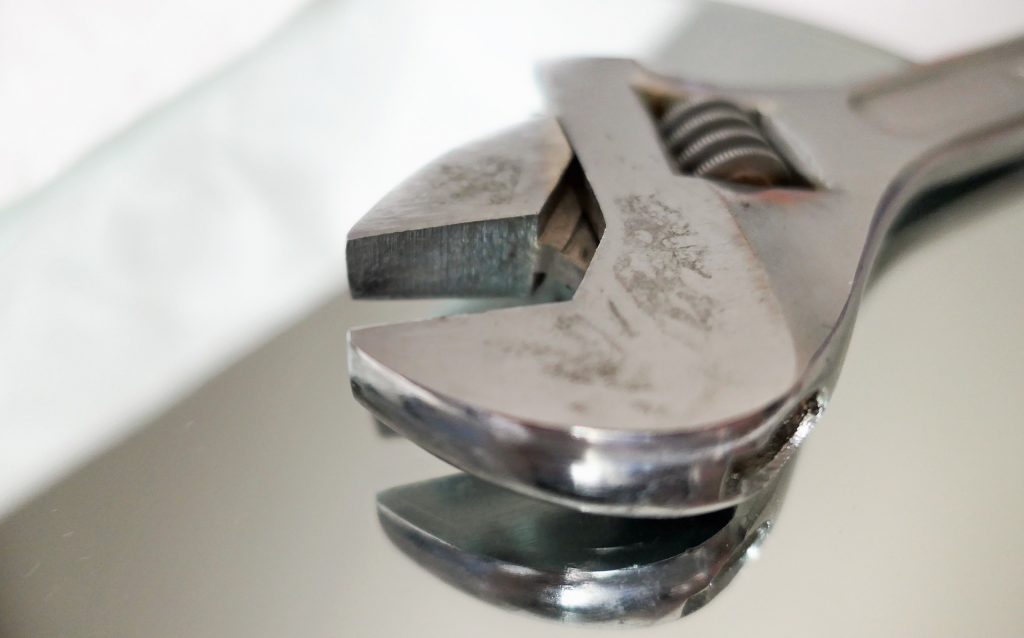Minor leaks account for more than 1 trillion gallons of water wasted each year in U.S. homes. To the average homeowner, that means as many as 10,000 gallons wasted each year – enough to fill a backyard swimming pool.
That is why the U.S. Environmental Protection Agency’s WaterSense® program promotes Fix a Leak Week the third week of March each year. This year, Fix a Leak Week is March 18 – 24 and Water – Use It Wisely is taking part in the conservation efforts by asking its customers to check fixtures for leaks, both inside and outside the home.
Fixing those leaks can save hundreds of gallons of water per month. In fact, did you know:
- A leaky faucet that drips at the rate of one drip per second can waste more than 3,000 gallons per year? That’s the amount of water needed to take more than 180 showers.
- A showerhead leaking at 10 drips per minute wastes more than 500 gallons per year? That’s the amount of water it takes to wash 60 loads of dishes in your dishwasher.
- An irrigation system that has a leak 1/32nd of an inch in diameter (about the thickness of a dime) can waste about 6,300 gallons of water per month?
Common types of leaks found in and around the home include old or faulty toilet flappers, dripping faucets, and leaking showerheads, as well as irrigation systems and other leaking valves.
Not sure if you have leaks? Your water meter is a good place to start. Use the step-by-step instructions in Find and Fix Leaks that are Draining your Budget to learn how to use your water meter to check for leaks in your home. Additionally, watch this informative video from Scottsdale Water’s Conservation Office:
Finding Leaks, Step 1: Read your Water Meter
Once you identify that you have a leak, take the time to fix the leak to save thousands of gallons of water annually. Here are some easy fixes for common leaks:
- Hose Bibbs – Hose bibbs are the faucets on the outside of your home where you connect your garden hoses. You may be more likely to notice leaky faucets indoors; however, be sure to check outdoor faucets, pipes, and garden hoses for leaks.
- Toilet Flappers – Flappers deteriorate over time, so you should check them every six months to make sure they are seating properly. Test your toilet for leaks by putting a few drops of a dark food coloring in the toilet tank, and wait 15 minutes (do not flush). If color appears in the toilet bowl, you have a leak. It’s easy to fix, and you can save more than 600 gallons a month. Here’s a video from SRP that will show you exactly what to do:
Identifying a toilet leak
- Faucets – Grab a wrench and fix that leaky faucet. It’s simple, inexpensive, and can save 140 gallons a week. Check under and around sinks for wet spots, moisture, musty odors, or bowed cabinetry. Fix leaky faucets and tub spouts by replacing worn washers and gaskets. Consider replacing your faucets with WaterSense® products.
- Showerheads – You can fix most leaky showerheads by ensuring a tight connection using pipe tape and a wrench. Consider replacing your showerheads with WaterSense® products.
- Irrigation systems – walk your property several hours after your irrigation system runs. Look for pooling water, wet spots, and dripping equipment. Be sure to walk your system again while your irrigation system runs. Replace missing drip emitters and sprinkler heads, adjust sprinklers to water grass and not the sidewalk, street, or your house. Also, use goof plugs to close drip lines that are not in use.
The handy guide Find and Fix Leaks that are Draining your Budget will help you find both easy and sneaky leaks inside and outside your home with an easy-to-follow process. It also provides a checklist for improving water efficiency in your irrigation system, pool or spa, evaporative cooler, and other water-using devices.
Another area prone to leaks is the swimming pool. One of the largest users of water and energy around your home, pool leaks often go unnoticed. Watch this helpful video with Leeann Yacuel from SRP to learn how to identify leaks in your pool and pool equipment.
Identifying a Pool Leak Using the Bucket Test
Celebrate Fix a Leak Week with Water – Use It Wisely by finding and fixing any leaks in and around your home. Leaks can happen anytime so be sure to check for leaks all year long. There are a number of ways to save water and they all start with you.


